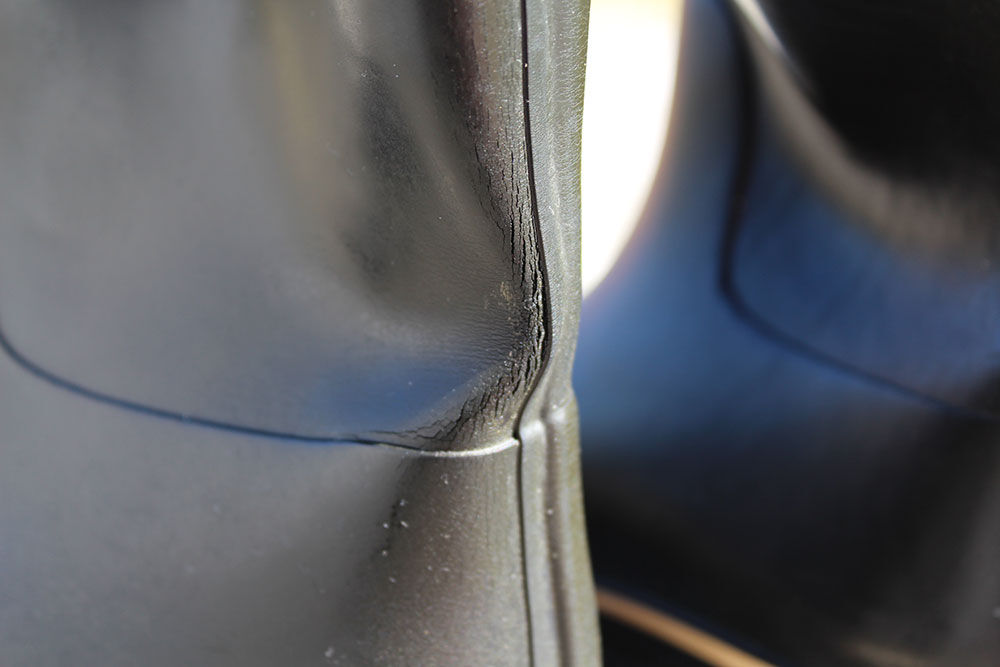Shoe care guide
Are you tired of your shoes or boots wearing out quickly? Extend the lifespan of your footwear with regular cleaning and care. It might sound like a lot of work, but it doesn't have to be. Read on for our best tips for simple maintenance of footwear.
Footwear in full grain leather or top grain leather
Before you wear your new leather shoes, we suggest using a waterproofing spray. Then, keep your leather regularly waterproofed to maintain its protection.
To clean and care for smooth leather, rub a leather conditioner into the shoes. Ensure that you work it into the seams as well. This makes the footwear more water-resistant. Be aware, though, that leather conditioner may darken the leather since it penetrates deeply to protect. Optionally, you can finish by polishing the shoes.
Leather balm or wax is also effective for cleaning and caring for full grain leather or top grain leather. Wax makes the leather water-resistant and has a softening effect. Leather balm doesn't darken the leather because it stays on the surface. It dries faster than leather conditioner, and you don't need to polish the footwear afterward.
Shoe polish that matches the color of your shoes can enhance their appearance. Polish is typically applied with a soft shoe brush, though some shoe creams come with a sponge for this purpose. Once the shoes are dry, they should be polished. Remember to use a separate brush for each color.
Footwear in nubuck and suede
To maintain the rough look, you can use a waterproofing spray for nubuck and suede. This conditions and protects the material. If your footwear is water-resistant, a waterproofing spray helps preserve that property as well. If your suede boots or shoes get dirty, you can brush off loose dirt with a clean brush.
Caring for rubber boots
If natural rubber boots are not maintained regularly, they may develop cracks over time, leading to leaks. To avoid dried-out rubber boots, follow these steps:
- Clean the boots in lukewarm water and let them dry at room temperature (not directly against a heat source or in the sun)
- Use a conditioning spray for rubber boots, rub it well into the material, and let them dry again at room temperature (not directly against a heat source or in the sun)
- Remove excess boot care spray from the rubber boots with a soft cloth
Treating the boots with conditioning spray gives your flexible rubber boots a nice color refresh. Note that the treatment should be repeated regularly to extend the lifespan of natural rubber. It's too late to save your boots from cracks once they're dried out.
If your rain boots are made of PU or PVC, they can be cleaned with lukewarm water and a soft brush. Wipe with a damp cloth afterwards.
Avoid using silicone with waterproof membranes
If your footwear has a waterproof membrane like Gore-Tex® or similar, avoid using silicone waterproofing spray as it can damage the membrane.
How to prevent shoes from smelling
Shoes or boots with a Gore-Tex® membrane are 100% waterproof and breathable. The membrane prevents solid water molecules (like raindrops) from entering while allowing vapor to escape.
If your Gore-Tex® footwear gets wet inside, be sure to remove the insoles and let the footwear dry at room temperature. You can stuff the shoes with newspaper or something similar, replacing it several times until they are fully dry.
For regular use, it's also a good idea to lift the insoles when taking off the shoes, allowing moisture beneath them to evaporate. This helps prevent bad odors in your footwear.
If you're struggling to get rid of shoe odor, consider using a shoe deodorant with antibacterial properties to neutralize the smell.
Switch between two pairs of safety shoes
To avoid smelly safety shoes, consider alternating between two pairs. During the workday, shoes get damp from sweat, creating a breeding ground for bacteria if they aren't allowed to dry completely before you wear them again. By switching between two pairs of shoes, each pair has time to dry fully, which can significantly extend their lifespan.
This practice is useful not only for work shoes but also for everyday footwear, as they also benefit from complete drying before reuse. Having multiple pairs of shoes can be advantageous for this reason.
Look after the heel counters on your shoes
Heel counters often wear out because people step on them when putting on their shoes. Flattened heel counters can ruin your footwear. Therefore, it's a good idea to use a shoehorn to put on and take off your shoes. This helps protect the footwear.
Do you have questions?
If you're unsure about anything, you're always welcome to contact our customer service.
We are here to help you!


